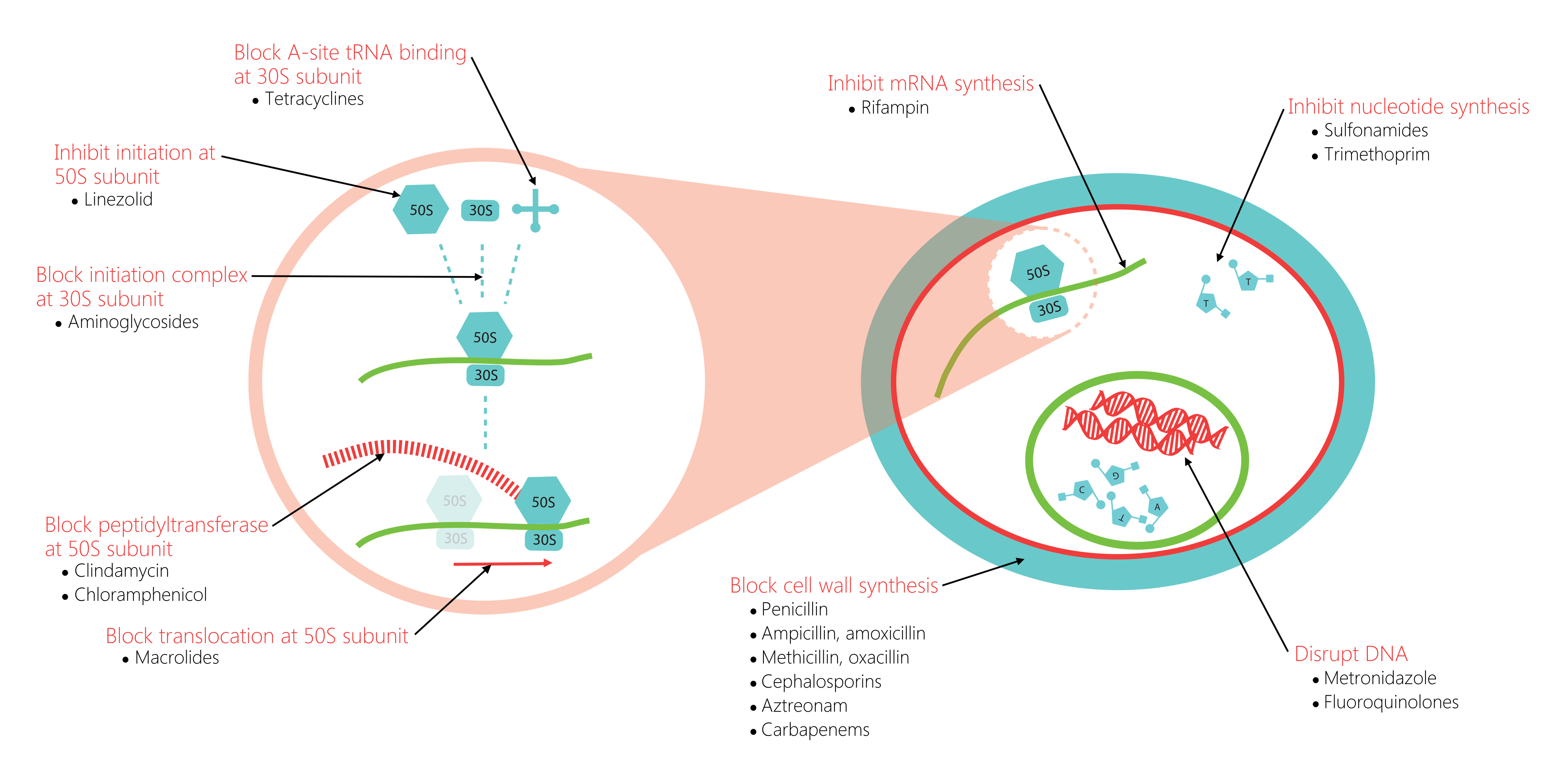WBR0046: Difference between revisions
Jump to navigation
Jump to search
YazanDaaboul (talk | contribs) No edit summary |
YazanDaaboul (talk | contribs) No edit summary |
||
| Line 29: | Line 29: | ||
|AnswerAExp=[[Chloramphenicol]] is not the drug of choice for ''[[Mycoplasma pneumoniae]]'' infection. | |AnswerAExp=[[Chloramphenicol]] is not the drug of choice for ''[[Mycoplasma pneumoniae]]'' infection. | ||
|AnswerB=Trimethoprim-Sulfamethoxazole | |AnswerB=Trimethoprim-Sulfamethoxazole | ||
|AnswerBExp=[[Trimethoprim-Sulfamethoxazole]] (TMP-SMX) is not the drug of choice for ''Mycoplasma'' infection. TMP-SMX is often used for simple [[UTI]] | |AnswerBExp=[[Trimethoprim-Sulfamethoxazole]] (TMP-SMX) is not the drug of choice for ''Mycoplasma'' infection. TMP-SMX is often used for simple [[UTI]] and ''[[Pneumocystis jirovecii]]'' infection in HIV-positive patients. TMP-SMX may also be used as prophylaxis for ''[[Pneumocystis jirovecii]]'' and [[Toxoplasma gondii]] in HIV-positive patients. | ||
|AnswerC=Azithromycin | |AnswerC=Azithromycin | ||
|AnswerCExp=[[Azithromycin]] is a macrolide antibiotic that blocks the 50s ribosomal subunit and can be used to treat ''[[Mycoplasma pneumoniae]] infection. | |AnswerCExp=[[Azithromycin]] is a macrolide antibiotic that blocks the 50s ribosomal subunit and can be used to treat ''[[Mycoplasma pneumoniae]] infection. | ||
Revision as of 22:44, 2 August 2014
| Author | [[PageAuthor::William J Gibson (Reviewed by Rim Halaby, M.D. [1] and Yazan Daaboul)]] |
|---|---|
| Exam Type | ExamType::USMLE Step 1 |
| Main Category | MainCategory::Microbiology, MainCategory::Pharmacology |
| Sub Category | SubCategory::Pulmonology, SubCategory::General Principles |
| Prompt | [[Prompt::A 27-year-old man presents to his primary care physician complaining of dyspnea and fatigue of one week duration. Over the past week, he has been experiencing gradually worsening new-onset fatigue and dyspnea. Despite his symptoms, the patient confirms that his condition is "not so bad". His past medical history is not significant. He denies any allergies or use of medications. His blood pressure is 112/82 mmHg, heart rate is 72/min, temperature is 101 F (38.3 C), respiratory rate is 24/min, and oxygen saturation is 92% on room air. Physical examination is remarkable for the presence of diffuse crackles over both lung fields. Chest xray is ordered; it shows diffuse interstitial infiltrates over both lung fields with no focal consolidation. Which of the following is the most appropriate treatment for this patient's condition?]] |
| Answer A | AnswerA::Chloramphenicol |
| Answer A Explanation | [[AnswerAExp::Chloramphenicol is not the drug of choice for Mycoplasma pneumoniae infection.]] |
| Answer B | AnswerB::Trimethoprim-Sulfamethoxazole |
| Answer B Explanation | [[AnswerBExp::Trimethoprim-Sulfamethoxazole (TMP-SMX) is not the drug of choice for Mycoplasma infection. TMP-SMX is often used for simple UTI and Pneumocystis jirovecii infection in HIV-positive patients. TMP-SMX may also be used as prophylaxis for Pneumocystis jirovecii and Toxoplasma gondii in HIV-positive patients.]] |
| Answer C | AnswerC::Azithromycin |
| Answer C Explanation | [[AnswerCExp::Azithromycin is a macrolide antibiotic that blocks the 50s ribosomal subunit and can be used to treat Mycoplasma pneumoniae infection.]] |
| Answer D | AnswerD::Penicillin |
| Answer D Explanation | [[AnswerDExp::Penicillin is ineffective against Mycoplasma infections because mycoplasma lacks a peptidoglycan cell wall.]] |
| Answer E | AnswerE::Aztreonam |
| Answer E Explanation | [[AnswerEExp::Aztreonam, a beta-lactam antibiotic resistant to beta-lactamases, is ineffective against Mycoplasma infections because mycoplasma lacks a peptidoglycan cell wall.]] |
| Right Answer | RightAnswer::C |
| Explanation | [[Explanation::The patient is suffering from a case of atypical pneumonia, a respiratory infection which often causes systemic symptoms such as fever, headache and myalgia. Atypical pneumonia differs from typical pneumonia in that atypical pneumonias often does not respond to common antibiotics (eg sulfonamides, or beta-lactams), does not show signs of consolidation, nor does it give rise to leukocytosis. On chest xray, patients often show diffuse interstitial infiltrates which conveys the appearance of a more severe infection than the patient’s symptoms suggest. Because patients often have mild symptoms, atypical pneumonia is alternatively referred to as “walking pneumonia".
Atypical pneumonia is most often caused by Mycoplasma pneumoniae, which usually infects older children and young adults less than 30 years of age. Mycoplasma pneumoniae can be treated with macrolides (eg azithromycin) or tetracyclines. |
| Approved | Approved::Yes |
| Keyword | WBRKeyword::Microbiology, WBRKeyword::Mycoplasma, WBRKeyword::Bacteria, WBRKeyword::Pneumonia, WBRKeyword::Infection, WBRKeyword::Antibiotics, WBRKeyword::Drug, WBRKeyword::Drugs, WBRKeyword::Pharmacology |
| Linked Question | Linked:: |
| Order in Linked Questions | LinkedOrder:: |
